Facebook RSVP: Strategies for Driving Event Attendance Through Ads
From Scrolling to Showing up: Mastering Facebook Ads to Boost Your Event’s Turnout
Key Takeaways:
- Identify your ideal attendees and use Facebook’s targeting features to reach them effectively.
- Refine your audience based on demographics, interests, behaviors, and location.
- Design visually appealing and attention-grabbing ad graphics.
- Craft concise and persuasive ad copy that highlights the event’s value.
- Incorporate a strong and clear CTA in your ad to encourage immediate action.
- Use action-oriented words like “Register now,” “Book Your Spot,” or “Get Your Tickets.
- Experiment with different ad variations to identify what resonates best with your audience.
- Test different visuals, headlines, CTAs, and ad formats.
In a world dominated by social media, events are no longer restricted to word-of-mouth and physical pamphlets. Instead, they now have Facebook as their virtual dance floor. Facebook’s unparalleled reach and targeting capabilities have made it an event promotion juggernaut. Imagine a room with enthusiastic attendees keen to experience the meticulously planned event. Imagine your event, whether a gala, a conference, or a music festival, leaving an indelible mark. This is the potential of Facebook advertising to increase event attendance.
No longer do fishermen cast a wide net and hope for the best. Today, event planners can access a sophisticated toolkit to highlight their gatherings to a precisely defined audience. In this digital age, the success of your event depends not only on its excellence but also on how effectively you can communicate its essence to the world. A well-crafted Facebook advertising campaign is irresistible, attracting potential attendees like moths to a flame.
But how precisely do you perform digital alchemy? How can a Facebook advertisement be transformed into a portal for ardent participation? This guide will delve into the complexities of increasing event attendance through Facebook ads. We’ll reveal the strategies that convert indolent scrollers into enthusiastic event-goers and the techniques that generate the coveted sense of urgency.
Join us as we unravel the mystery surrounding event promotion in the era of social media. From composing persuasive ad creatives that resonate to deciphering the metrics that measure success, we will equip you with the knowledge necessary to transform your event from unnoticed to unforgettable. Therefore, whether you’re planning a business conference, a formal opening, or an artistic exhibition, buckle up and prepare to navigate the world of Facebook ads for events. Your audience is waiting, and you have command of the stage.
Why Facebook Advertisements Are Necessary for Event Attendance
Social media has evolved from a simple promotional tool to an indispensable success catalyst in the ever-changing event planning landscape. Facebook stands out among the numerous available platforms as the most influential in influencing event attendance. Facebook ads have revolutionized the art of event promotion by enabling organizers to reach the target audience with pinpoint accuracy, leveraging the strength of its large user base and sophisticated targeting capabilities. This article explores how rebook advertisements are beneficial andal for increasing event attendance and how they utilize visuals and narrative to create a compelling event advertising campaign.
Utilizing Facebook’s Numerous Users
Facebook’s billion monthly active users is a dual metropolis where people from all over the world congregate. This unprecedented reach affords event organizers a unique opportunity to cast a wide net and entice a diverse audience. Whether your event is local, regional, or global in scope, Facebook’s extensive ecosystem guarantees that your event’s message will resonate across cultures and communities.
Using Accurate Audience Targeting
Facebook’s true alchemy resides not only in its size but also in its ability to segment and target users with remarkable accuracy. Event administrators can use a treasure trove of user data, including demographics, interests, and browsing history, to create audience segments perfectly aligned with the event’s theme and purpose. Imagine a technology conference reaching technology enthusiasts or a food festival attracting the attention of gastronomes with ads that speak directly to their interests. This level of customization improves engagement, resulting in higher click-through rates and, ultimately, an increase in event attendees.
Using engaging visual content to captivate audiences
In this era of scrolling and skimming, it is an ability to capture attention within seconds. Facebook ad formats permit event administrators to employ visually engaging content that halts users’ mid-scroll. Whether it’s captivating images, videos, or interactive carousels, visual content can impart your event’s essence in an instant. An image displaying the magnificence of a conference venue or a teaser video demonstrating the excitement of a music festival can stimulate users’ interest and encourage them to learn more.
Ad Copy: Creating Compelling Narratives
Nevertheless, captivating visuals require a story that complements and enhances them. Here, advertising copy comes into play. Beyond delineating the event’s logistics, event organizers can create a narrative that elicits emotions and generates excitement. Ad copy can describe what attendees can anticipate, their experiences, and the memories they will create. A well-written advertisement transforms from a simple announcement into an enticing invitation.
Developing a Successful Facebook Event Ad Campaign
Utilizing Facebook ads to increase event attendance requires more than creating individual advertisements. It entails crafting a comprehensive event advertising campaign that resonates with the intended audience and maximizes engagement.
The first stage is to identify your event’s unique selling propositions (USPs). What makes your event unique? Is it the roster of presenters? The prestigious workshops? The magnificent venue? Identifying and emphasizing these USPs is essential, as they are the foundation of your advertising campaign’s messaging.
Once your USPs are in place, it is time to create your Facebook event. Creating a dedicated event page provides a central location for potential attendees to gather information and register. Optimize this page with captivating visuals, event information, and a distinct call to action.
Selecting the proper advertising objective follows. Whether your objective is to increase event responses, website visits, or engagement, it should align with the objectives of your event. Each advertisement within the campaign should serve a particular purpose, such as raising awareness or encouraging registration.
Facebook advertisements have revolutionized event promotion. The platform’s expansive reach and precise targeting, combined with the captivating potential of visuals and storytelling, create a dynamic environment for event organizers to connect with their desired audience. Crafting an effective Facebook event ad campaign involves utilizing these elements strategically to create a seamless path from interest to attendance.
Developing a Successful Facebook Event Ad Campaign
In the domain of event promotion, creating an effective ad campaign is comparable to composing a symphony that resonates with your target audience. The digital age has provided unprecedented tools to conduct this symphony, and Facebook’s multifaceted platform is at the vanguard of this transformation. A well-structured Facebook event advertising campaign can convert casual onlookers into fervent attendees. In this section, we will examine the three essential stages for developing an event advertising campaign that attracts attention and increases attendance.
Identifying what makes your event distinctive
Every event has a distinct narrative, a character that distinguishes it from others. You must first determine these unique selling propositions (USPs) to develop an effective advertising campaign. Is it the prestige of your keynote speakers, the exclusivity of your seminars, or the picturesque location? Understanding what makes your event unique will serve as the foundation for your campaign. The USPs serve as the guiding stars of your campaign, directing your messaging toward the aspects that will most resonate with your target audience.
Including USPs in Advertising Messaging
After identifying your USPs, the next stage is to integrate them seamlessly into your advertising messaging. Your ad copy and visuals should elegantly highlight these distinguishing characteristics. If your event features world-renowned presenters, create advertising copy highlighting their expertise and insights. For exclusive workshops, emphasize the experiential learning opportunities. Remember that your advertisement is an invitation, a preview of the experience that attendees will enjoy. Every word and image should be crafted to arouse intrigue and anticipation.
Creating an Event Page on Facebook
An effective Facebook event advertising campaign begins with an event-specific landing page. This functions as the digital center of your campaign, where interested parties can discover detailed information about your event. The event page serves as a center, providing event information and a forum for discussions, updates, and participation. Ensure the event’s name, date, location, and description are correct and appealing. A well-structured event page sets the stage for the success of your campaign.
Optimizing Event Information and Specifics
Beyond the fundamentals, your event page should feature an engaging narrative reflecting your event’s enthusiasm. Use high-quality images that convey the essence of your event, whether the elegance of a gala dinner or the excitement of a music festival. Video previews, images of past events, and secret glimpses can all help build anticipation. The event page should guide attendees through what to expect and why they should attend by answering any concerns.
Event Responses vs. Clicks: Choosing the Right Objective
When creating an ad campaign, Facebook provides a variety of objectives from which to choose. Two objectives stand out for event promotion: event responses and clicks. Event Responses optimizes your campaign for individuals most likely to respond favorably to your event, signifying their intent to attend. On the other hand, the objective of clicks is to direct users to your event page or website. The objective you choose depends on the stage of your campaign and the objectives of your event. Event Responses is your go-to if you’re aiming to increase publicity and RSVPs. Clicks may be a preferable option if you want to drive traffic to your event page for additional information.
Alignment of ad objectives with event objectives
It is essential to align your advertising aims with those of your event. Do you wish to occupy a specific number of seats, generate prospects, or generate buzz? Each objective will influence the message and strategy of your campaign. If your event has a limited capacity, urgency may be a crucial component of your advertising copy. If your objective is to generate leads, your advertisement could promise attendees exclusive insights or resources if they attend your event. For a cohesive and effective campaign, ensuring congruence between your advertising objectives and event goals is crucial.
Creating an effective Facebook event ad campaign is, in conclusion, a meticulously orchestrated process that combines strategic thought with artistic finesse. You establish the foundation for a campaign that resonates with your audience and drives meaningful event attendance by identifying your event’s unique selling points, creating a compelling event page, and selecting the appropriate ad objectives. Remember that your campaign is about more than just selling tickets; it’s about creating an experience that attendees will want to experience.
Designing Ad Creatives That Capture Attention
In the competitive digital marketing realm, attention is a highly valued commodity. Capturing the attention of a perusing user requires more than just fate; it requires creativity, strategy, and a comprehensive comprehension of your audience. In the sphere of event promotion, where every action counts, creating captivating ad creatives is crucial to the success or failure of your campaign. In this segment, we discuss the art of creating visually arresting and persuasive advertisements and refining your audience targeting for maximum impact.
Elements of Design That Stand Out
The proverb “a picture is worth a thousand words” could not apply more to Facebook event advertising campaigns. Your ad’s first impression relies significantly on the quality of its visuals. Images with a high resolution that capture the essence of your event serve as an immediate draw. Whether it’s the sophistication of a gala’s red carpet or the excitement of a music festival’s crowd, your event’s visuals should reflect the emotions you wish to elicit. Crisp images and vibrant hues evoke a sense of professionalism, indicating to viewers that your event is worth their time.
Using Video and Carousel Ads to Generate Dynamic Content
A picture can communicate much, but a video can tell a story. Adding video content to your ad creatives adds a dynamic element that static images cannot accomplish. A prelude video can transport viewers into the heart of your event by revealing glimpses of what is to come. On the other hand, Carousel advertisements provide a canvas for multiple images, allowing you to reveal your event’s narrative gradually. Utilize these formats to highlight various facets of your event, building anticipation with every swipe or click.
Crafting Concise and Clear-Ad Headlines
In a world where attention spans are short, brevity is your ally. Your advertisement’s headings should be concise yet compelling, capturing the substance of your event in a few words. Wordplay, engaging phrases, and robust action verbs can help make your headlines memorable. For example, a headline like “Unlock the Future: Tech Summit 2023” combines intrigue and relevance to encourage users to learn more about your event.
Including Action-Oriented and Urgent Language
Effective advertising copy not only informs but also compels. Developing a sense of urgency is a potent motivator. Incorporating phrases such as “Limited Seating Available,” “Early Bird Discount Ending Soon,” and “One Night Only” incites FOMO and compels immediate action. Action-oriented language encourages users to take the next action, whether it’s RSVPing, purchasing tickets, or investigating further information.
Utilization of Facebook Audience Insights
Regardless of how captivating your ad creatives may be, they must reach the correct audience. Facebook’s audience insights provide a treasure trove of information that can inform your targeting strategy. Examine demographic factors such as age, gender, and location to ensure your advertisements reach the appropriate demographic groups. Examine your potential attendees’ interests and behaviors to determine what resonates. This data-driven strategy ensures that your advertising dollars are spent on individuals most likely intrigued by your event.
Creating Tailored and Similar Audiences
Custom and lookalike audiences elevate targeting beyond basic demographics. Custom audiences enable you to communicate with users who have previously visited your event page or website. Lookalike audiences, on the other hand, broaden your reach to include individuals who share characteristics with your current attendees. These audiences are highly likely to participate because they exhibit comparable behaviors to those who are already interested in your event.
Increasing Reach Within Particular Locations
Geotargeting is an effective instrument, particularly for local or regional events. It enables you to specify the geographic regions where your advertisements will appear, ensuring that your campaign reaches the appropriate individuals in the appropriate locations. This is especially advantageous for events that require physical attendance, such as seminars, workshops, and local festivals. By determining the location of your audience, you can ensure that your advertisements resonate with those most likely to attend.
Adapting Advertising Messages to Local Audiences
Geotargeting is not just about reaching the correct location; it also involves speaking the local language. Personalization is achieved by creating advertising messages that resonate with the cultural nuances of a specific region. Use local references and terminology to emphasize how your event serves the local community. This strategy establishes a relationship that transcends generic advertising.
Designing eye-catching ad creatives is a multifaceted endeavor that requires a harmonious mixture of captivating visuals, persuasive ad copy, and strategic targeting. You can capture your audience’s transient attention by incorporating high-quality imagery, engaging videos, and concise yet compelling headlines. This, combined with the effectiveness of urgency and action-oriented language, is a prescription for conversions. In addition, knowing your audience’s demographics, preferences, and behaviors enables you to optimize your targeting strategy, whereas geotargeting ensures that your message reaches the appropriate regions. In the competitive landscape of event promotion, the key to distinguishing out and generating meaningful engagement is to construct captivating ad creatives.
Optimizing Budget and Schedule for Advertising
Strategic decisions facilitate the path from curiosity to confirmed attendance in event promotion. The allocation of your advertising budget and the scheduling of your ad placements have the greatest impact on the success of your campaign. To maximize the impact of your efforts, it is essential to optimize your advertising budget and schedule. This segment examines the art of determining your ad budget, evaluating allocation strategies, and strategically scheduling your advertisements to capture your audience’s attention at the optimal times.
Budget Allocation for Maximum Effect
Your advertising budget is the engine that drives your campaign, so designating it intelligently can make all the difference. To determine an appropriate budget, you must first consider the scale of your event and the size of your intended audience. High-impact events with broad appeal may require a larger budget, whereas niche events can be successful with a smaller budget. In addition, consider the competitiveness of your industry and the overall campaign objectives. A well-balanced budget ensures your advertisements are visible to the appropriate audience without prematurely exhausting your resources.
Allocation of A/B Testing Budget for Different Audiences
As audience segmentation becomes more refined, evaluating your budget allocation using A/B splits can be valuable. Observe which audience segments receive a favorable response after allocating your budget to various audience segments. This not only guides you toward the most responsive segments but also prevents you from squandering audiences with lower levels of engagement. For instance, if you promote a technology conference, you allocate a larger budget to tech-savvy audiences and a smaller budget to general interest groups.
Identifying Times of Peak Engagement
Timing can be the secret ingredient to unleashing engagement in the digital domain. Determining the periods when your target audience is most active on Facebook can substantially increase the effectiveness of your campaign. Examining your audience’s insights and engagement patterns in the past provides valuable indicators. For example, if you’re targeting professionals, scheduling your advertisements during lunch breaks or after work hours may result in higher engagement rates. Aligning your ad placements with your audience’s online behavior increases the likelihood that your ads will resonate.
Using Ad Scheduling to Maximize Visibility
Utilizing Facebook’s ad scheduling feature strategically increases the effectiveness of your campaign beyond identifying optimal periods. Ad scheduling enables you to display advertisements only during specific hours or days, ensuring your budget is allocated when engagement potential is highest. For example, if your event is a weekend workshop, you could schedule your advertisements to run extensively on Fridays and Saturdays to attract weekend coordinators. This is your advertising budget, and your advertisements are prominent when your target audience is most receptive.
Optimizing the advertising budget and schedule is a complex ballet that combines fiscal restraint and strategic sequencing. By designating your budget with a clear comprehension of the scope and size of your event’s audience, you can ensure that your resources are invested intelligently. A/B testing budget allocation across various segments refines your strategy by diverting funds to the most profitable areas. Strategic ad scheduling takes This optimization a step further, which aligns your advertisements with your audience’s prime engagement periods for maximum impact. Mastering the art of financing and schedule optimization is crucial for visibility and meaningful engagement and attendance in the dynamic world of event promotion, where every click counts.
Evaluation and Improvement of Ad Performance
In event promotion, assessing the efficacy of your efforts marks a critical juncture, from creating captivating advertisements to filling seats. The digital landscape provides various tools that enable event administrators to monitor the efficacy of their Facebook ad campaigns and optimize their strategies for maximum impact. This section examines the implementation of the Facebook Pixel, the craft of analyzing key performance metrics, and how to leverage these insights to improve the performance of your advertisements.
Event Registration and Conversions Monitoring
The Facebook Pixel is central to gauging ad efficacy; it is a tiny piece of code that delivers a potent impact. You can monitor user interactions, measure conversions, and evaluate the overall impact of your advertising campaigns by integrating the Facebook Pixel into your event website. For event promotion, the Pixel can monitor specific actions such as event registrations, ticket purchases, and page visits. This enables you to measure the performance of your campaigns by determining the number of users who not only selected but also completed the desired action, be it an RSVP or a purchase.
Strategies for Retargeting to Reengage Interested Users
Not only does The Pixel measure, it also allows you to reengage with users who have expressed interest in your event. This is where retargeting comes into play. The Pixel collects this information when users visit your event page or interact with your advertisements. You can then create ads specifically for these users that remind them of your event and encourage them to take action. Retargeting capitalizes on prior user engagement to increase the likelihood of conversion. For instance, if a user visits your event page but still needs to complete the registration, a retargeting ad could offer an exclusive discount to encourage them to complete the transaction.
Keeping an eye on Click-Through Rates (CTR) and Engagement
Monitoring click-through rates (CTR) provides insight into the appeal and relevance of your advertisement beyond conversions. CTR represents the proportion of users who clicked on your advertisement after viewing it. A high CTR indicates that your advertisement resonates with your audience and piques their interest. In addition, engagement metrics such as likes, shares, and remarks qualitatively evaluate your advertisement’s effectiveness. An advertisement that generates conversation or encourages users to share their enthusiasm increases its organic reach and effectiveness.
Evaluating Conversion Rates and Return on Investment
Your conversion rate is the percentage of users who completed the desired action (such as registering for your event) after selecting your ad. A high conversion rate indicates that your advertisement shows interest and encourages them to take action. The return on investment (ROI) evaluation furthers this analysis by calculating the monetary gain from your advertising expenditures. ROI compares the cost of advertising to the revenue generated by conversions. This data-driven perspective allows you to comprehend your campaign’s measurable impact on your event’s success.
Assessing and improving advertisement efficacy is a complex tango between data and strategy. Implementing the Facebook Pixel enables you to monitor conversions, retarget interested users, and encourage their attendance. Analyzing key performance metrics such as click-through rate (CTR), engagement, conversion rates, and return on investment (ROI) provides valuable insight into the effectiveness of your campaigns. These metrics provide a comprehensive view of your advertisement’s impact, allowing you to refine your strategies and boost future performance. In the domain of event promotion, where each click has the potential to occupy a seat, leveraging the power of data-driven insights is essential to achieving a successful turnout.
Creating buzz and anticipation for your event
Event promotion has evolved beyond simple announcements in the digital age; it is now a dance of anticipation, storytelling, and user engagement. Creating a sense of anticipation and FOMO (Fear Of Missing Out) has evolved into a strategic art form that draws potential attendees into the narrative of your event. This segment examines the effectiveness of pre-event teasers and countdowns and the impact of using user-generated content (UGC) to generate enthusiasm and increase attendance.
Creating Teasers and Countdowns Before an Event
Imagine an event that unfolds like a compelling story, each chapter disclosing a new dimension of exhilaration. Like these chapters, pre-event snippets provide compelling insights into what attendees can anticipate. Teasers may include secret views of keynote speakers, glimpses of event preparations, or abbreviated introductions to interactive sessions. These cues arouse inquiry and anticipation in potential attendees, compelling them to learn more about your event. By highlighting thrilling event features in advance, you can create a captivating and enticing narrative.
Utilizing Countdown Ads to Build Anticipation
Countdowns are the pulse of anticipation, with each strike drawing the audience closer to the moment of exhilaration; including countdown advertisements in your campaign appeals to the natural human desire for anticipation. In addition to providing a countdown, these advertisements engender a sense of urgency and enthusiasm. In the days leading up to your event, you can strategically position countdown advertisements, each reinforcing the message that the moment is quickly approaching. This urgency not only motivates immediate action but also heightens attendees’ enthusiasm.
Display Participant Stories and Testimonials
The most persuasive voices in event promotion frequently come from those who have attended the event themselves. Using user-generated content (UGC) such as stories, testimonials, and reviews produces a compelling narrative that resonates with prospective attendees. Share the experiences of past attendees who had life-changing encounters at your event. Highlight their journey, including how they gained knowledge, made connections, or were inspired. UGC adds authenticity and credibility to your event by providing social evidence that it delivers on its promises.
Encouraging Participants to Share Their Enthusiasm
In the age of social sharing, attendees are more than just participants; they have the potential to become brand advocates. Encourage attendees to express their enthusiasm for the event on social media. Create event-specific hashtags and prompts encouraging attendees to share their anticipations, plans, and imaginative interpretations of the event. Share these posts on the social media platforms associated with your event, transforming attendees into co-creators of the event’s narrative. This amplifies the chatter surrounding your event and creates a community around it.
Generating excitement and FOMO for your event requires more than just promotion; it requires constructing an immersive experience that begins well before the event. Teasers and countdowns used before an event construct a narrative of anticipation that engages potential attendees. Using user-generated content lends credibility to your message, converting former attendees into advocates. Inviting attendants to share their enthusiasm broadens the narrative’s reach and fosters a sense of community and belonging. In the digital storytelling era, creating excitement and fear of missing out (FOMO) is a dynamic strategy that not only fills seats but also creates an indelible event experience.
Mastering Event Promotion Using Facebook Advertisements
In the fast-paced world of event planning and promotion, the digital landscape has emerged as an indispensable canvas for constructing experiences that resonate with global audiences. Facebook is a towering colossus among the available platforms, providing event organizers with various tools to execute successful campaigns. From creating attention-grabbing ad creatives to optimizing budgets and schedules, the voyage through the domain of Facebook event ads is one of strategic skill and inventiveness.
By delving into the complexities of Facebook’s capabilities, we have uncovered the art of captivating audiences through captivating visuals and compelling storytelling. Event organizers are now required to be able to create advertisements that not only grab attention but also pique curiosity. Combining high-quality imagery, engaging videos, and dynamic ad formats has transformed event promotion, transporting potential attendees into the event’s narrative.
The voyage, however, does not end with creativity alone. Successful campaigns are based on meticulous audience segmentation and pinpointed targeting. Facebook’s comprehensive insights provide a window into your audience’s behaviors, interests, and demographics, allowing you to craft your messages with surgical precision. By creating custom and lookalike audiences, you can ensure that your advertisements are viewed by those most likely to engage.
However, the actual power of Facebook event ads resides in their capacity to measure, analyze, and improve performance. Implementing the Facebook Pixel provides a data-rich tapestry that enables you to measure conversions and retarget interested users. Data is transformed into actionable insights by evaluating key performance metrics, such as click-through rates, engagement, conversion rates, and return on investment. Through this analysis, campaigns evolve, strategies are refined, and advertising performance rises.
As we conclude this exploration of mastering event promotion through Facebook ads, we realize that it’s not enough to create compelling advertisements; it’s also necessary to construct experiences that transcend displays and profoundly affect potential attendees. From devising attention-grabbing creatives to generating chatter and FOMO, we have comprehensively understood the complexities involved. With each step, we’ve woven a tapestry that elevates event promotion to the level of an art form, where creativity meets data and engagement drives attendance.
Mastering Facebook event ads is a skill that propels event organizers to the vanguard of success in this dynamic environment, where innovation and adaptation are constant companions. Combining originality, data-driven insights, and an unwavering dedication to the attendee experience allows it to fill seats, ignite connections, and create lasting memories.
As this investigation concludes, remember that the stage is yours to command. Leverage the effectiveness of Facebook event ads, imbue your campaigns with authenticity, and allow your events to exceed expectations.




















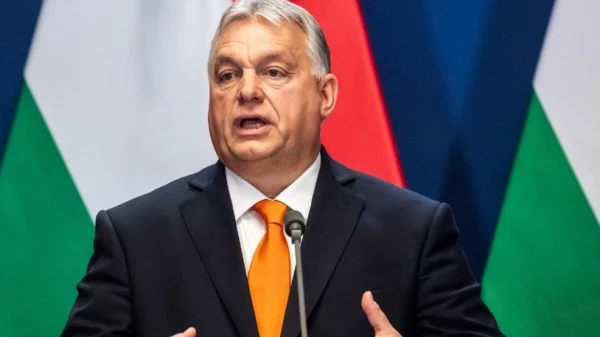




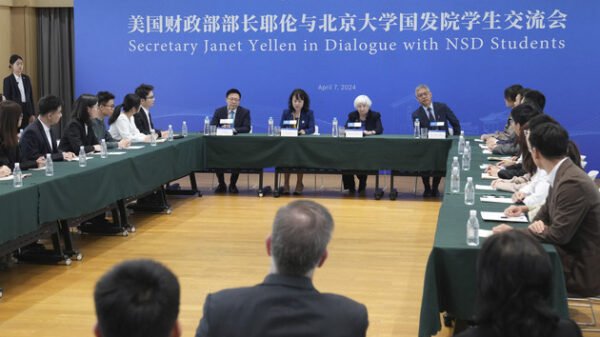
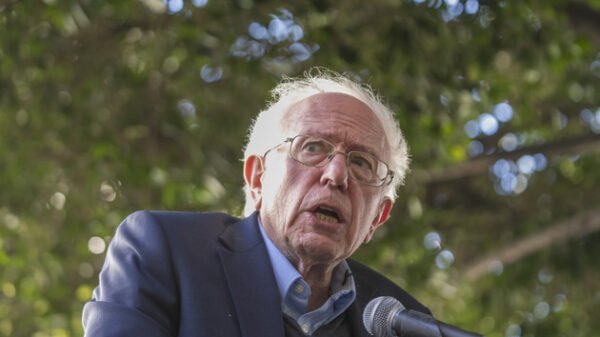

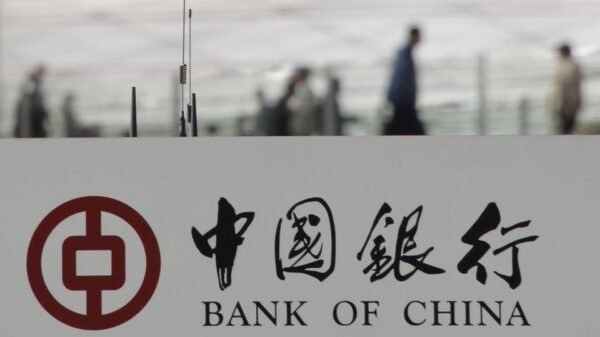

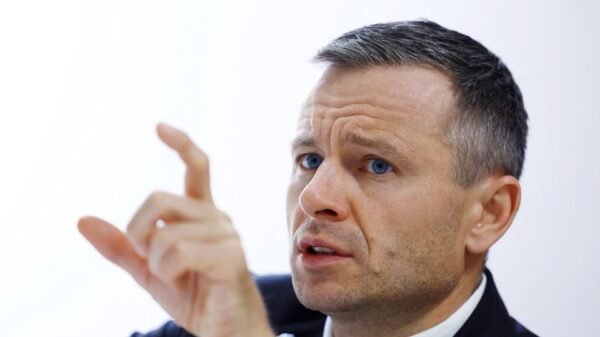
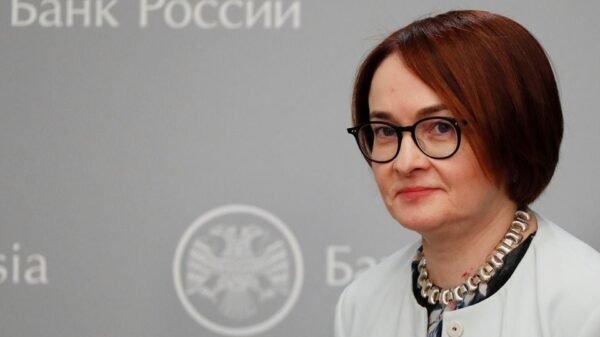
























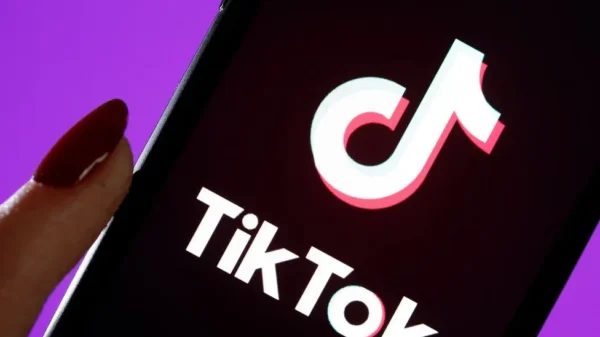
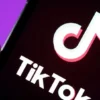


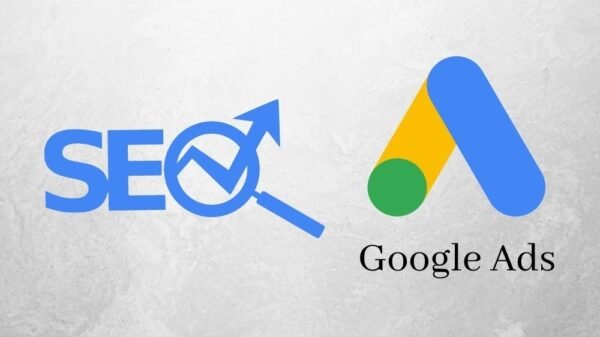

Comment Template